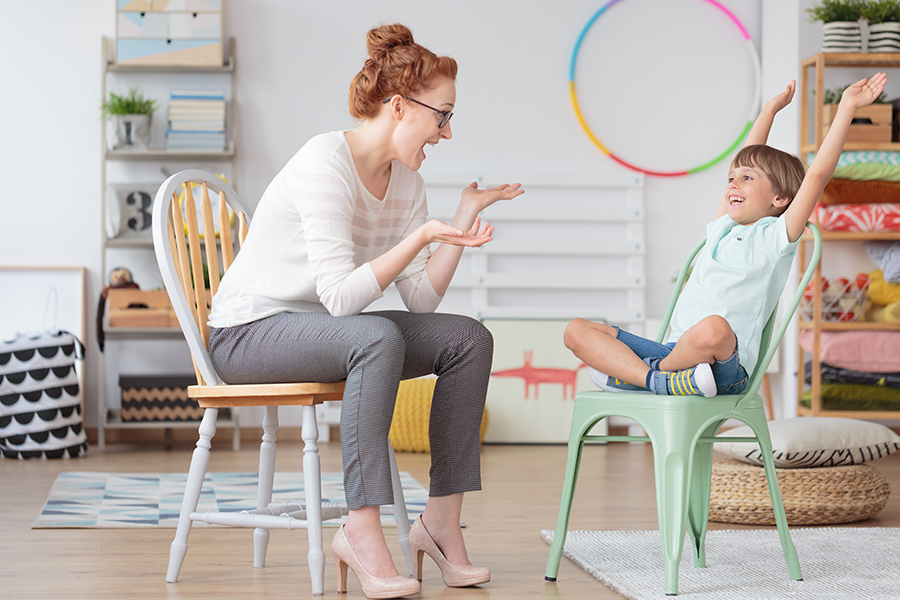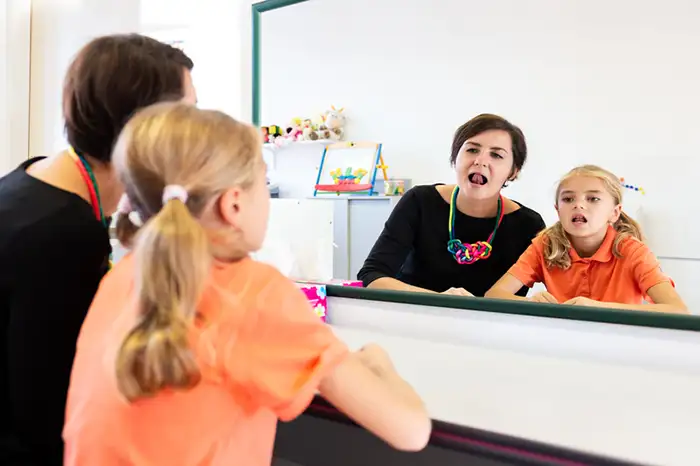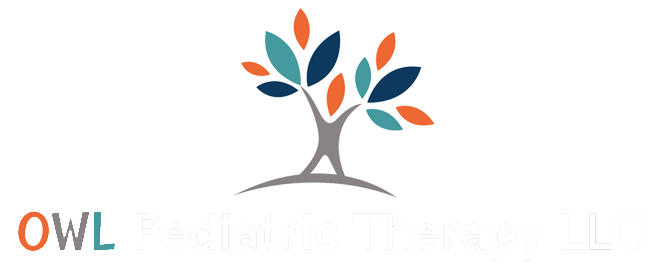
What is a speech sound disorder?
Very few young children speak with perfect articulation skills. As children refine their speech, many errors are naturally eliminated. A speech sound disorder occurs when the child continues to make the error past the age that it is typically acquired. For example, it is normal for a two-year-old child to say, “tup” for “cup.” However, if a four-year-old child continues to make this error, treatment may be warranted.
How will the SLP assess my child?
A speech-language pathologist can help you determine what error patterns your child has and if therapy is warranted for your child. A speech sound assessment might include:
- A standardized assessment (usually the child names pictures and the SLP listens for target sounds)
- Listening to your child in connected speech
- A screening of oral structures and functions (through looking in the child’s mouth, asking the child to say certain words quickly, etc).
How do I know if my child is typical in his/her speech sound development?
There are a few good “rules of thumb” to help determine if your child needs to be screened or assessed for a speech sound disorder:
- Intelligibility: people who do not know your child well should be able to understand 50% of what the child says by their 2nd birthday, 75% of what your child says by their 3rd birthday, and 100% of what your child says by their 4th birthday.
- Approximation of adult speech: Children should have all speech sounds by the age of 8 years old. They should sound like adults in their articulation.
- If you are unsure, please call the office, and we can walk through the process with you.
ASHA has an age of acquisition chart available by CLICKING HERE.
Be careful when interpreting this chart without the help of a professional, because it assumes that the sound follows the path of typical development. For example, 90% of children acquire /sh/ as in “ship” by the age of 7. The children who do not yet have the sound are typically using a “s” sound, so they are saying “sip” for “ship. If they have a different error pattern, such as saying “tip” for “ship,” or a “slushy” “sh” sound, then therapy would be warranted well before the age of 7.

What will treatment look like?
Young children and elementary-aged students often find treatment for speech sound disorders to be fun. We incorporate the drill-based work within games and activities. Children will practice discriminating between correct productions and incorrect productions. Then they will practice their new sound in syllables, words, phrases, sentences, and in their spontaneous speech. For older kids and adults, therapy is often intrinsically motivating due to the social, educational, and vocational consequences of imprecise speech. We use the interest of the client to work on generalization and carryover. For example, a college student may perform a mock interview with their new speech sound as part of their practice.


